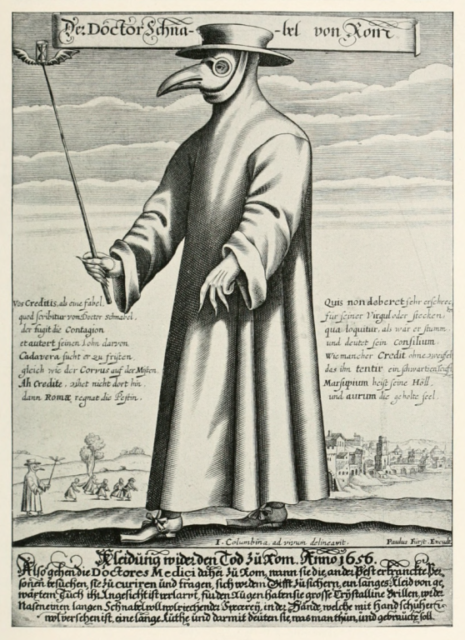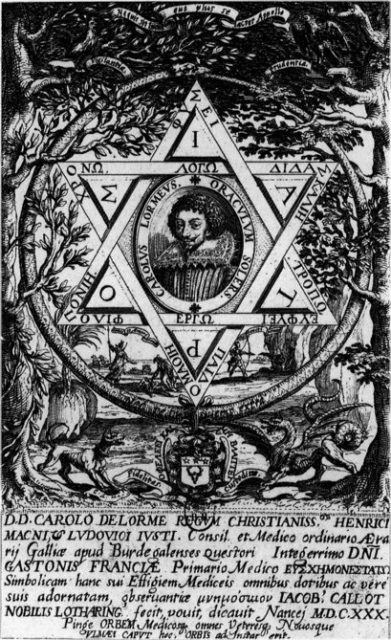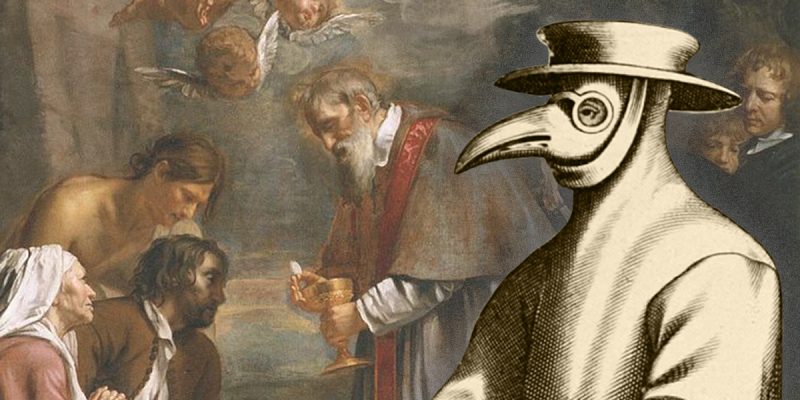Bubonic plague, also known as the Black Death, was one of the deadliest diseases ever encountered by the human race. During the second series of plague epidemics in Europe, which lasted from the early 14th century to the beginning of the 18th century, bubonic plague killed more than 70 million people.
Nowadays, up to 3,000 people contract plague every year but the disease is effectively treated with antibiotics. In Madagascar, a frightening plague outbreak is hitting the headlines and causing tension. Since it wreaked havoc across Europe for several centuries and left a lasting legacy of horror and misery, things associated with this deadly disease, such as the eerie outfits worn by plague doctors, still invoke dread.
Although Roman and Venetian physicians wore similar outfits since the 14th century, the plague doctor costume became widespread in France in the 17th century. At that time, medical scientists had no idea that the disease was spread by microscopic bacteria. Instead, they favored the “miasma theory,” that the disease was spread by foul smells that emanated from garbage, rotting flesh, and various other substances which were perceived as unclean.

It was thought that these foul smells were capable of polluting the air and infecting humans and animals with various fatal ailments. The miasma theory actually remained the principal origin of disease theory for many infections, including cholera and malaria, until the second half of the 19th century when it was finally disproved by the scientifically accurate germ theory.
Just as fascinating this clip of the Joan of Arc ring returned after 600 years
The principal designer of the plague doctor costume was Charles de Lorne, a 17th-century medical doctor whose practices were so acclaimed that he was employed as the personal physician for three successive French kings: Henri IV, Louis XIII, and Louis XIV. De Lorne modeled the outfit after garments worn by soldiers: he designed a heavy head-to-ankle overcoat, gloves, and boots which were made from waxed Levantine and Morrocan leather, and were supposed to protect the wearer from any unprotected physical contact with the infected population.

The most recognizable feature of the plague doctor costume, the beaked bird-like mask, was designed to keep the wearer from inhaling the foul-smelling air which was thought to spread the disease. The beak of this primordial gas mask was filled with a mixture of scented medicinal herbs. It was thought that the wearers could protect themselves from contracting the plague by inhaling the fresh scent of herbs while being surrounded by the polluted and infectious air. Furthermore, the mask’s eyeholes were covered with round glass spectacles and the plague doctors were supposed to wear a black top hat which indicated their profession and status.
As soon as beaked plague doctors appeared on the streets of France, they became synonymous with suffering and tragedy. Common people of the time frequently perceived them as the messengers of death and the distributors of God’s punishment. To minimize their exposure to the disease, plague doctors carried long wooden sticks which they used to examine the infected.
The sticks were used to check the pulse of the unfortunate people who collapsed in the streets and to examine the deteriorating condition of their skin. Also, many plague doctors utilized their sticks to defend themselves from the hordes of infected and hopeless citizens who approached them and begged them to stop their excruciating pain.

Although the costumes of plague doctors were intricately made and designed to prevent the wearers from contracting plague, plague doctors often succumbed to the disease. They treated the infected with ineffective remedies and weren’t aware of the true cause of the disease, so their elaborate outfits were often useless.
Since 17th-century hygiene standards were quite low and the plague has several means of transmission and infection, including flea bites, rat bites, contact with contaminated food, fluids and tissues, and infectious airborne droplets, plague doctors often became as sick and hopeless as the people they were trying to cure.
